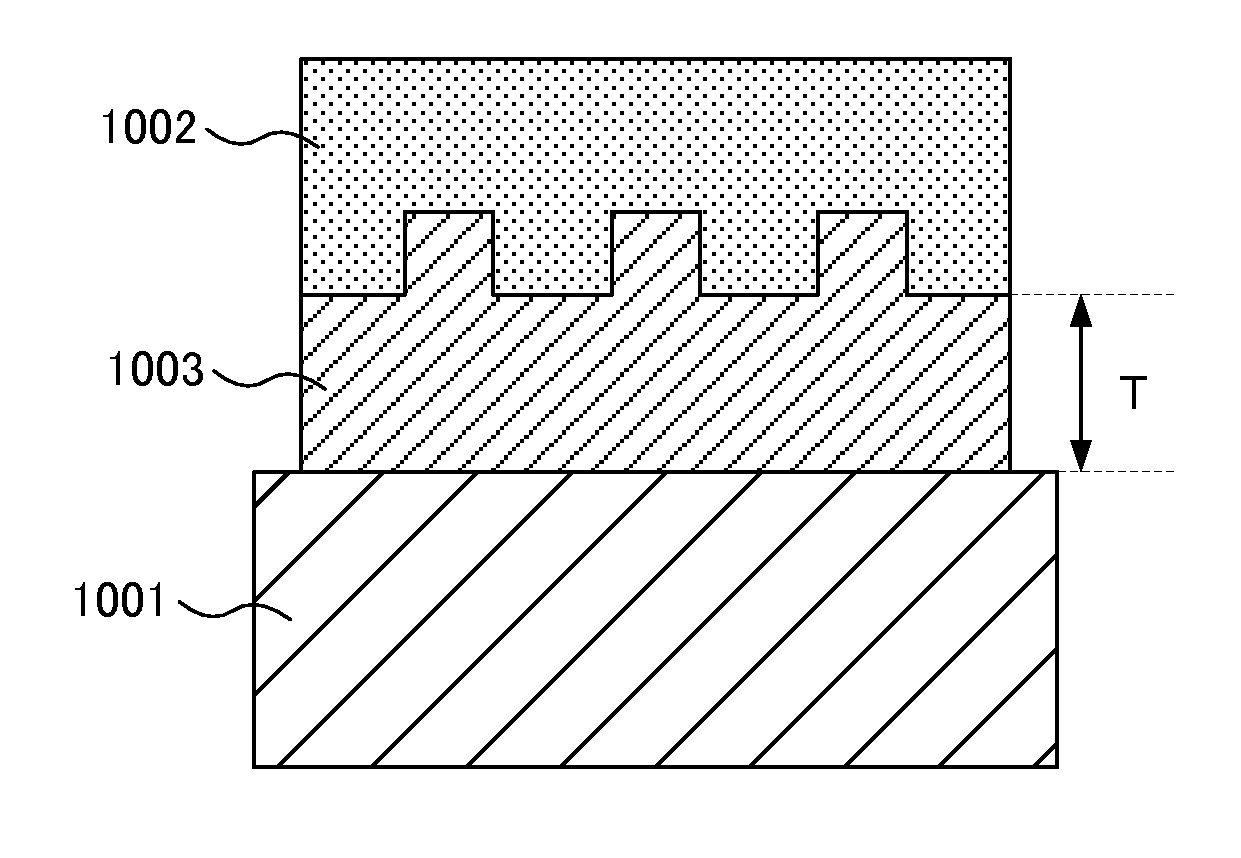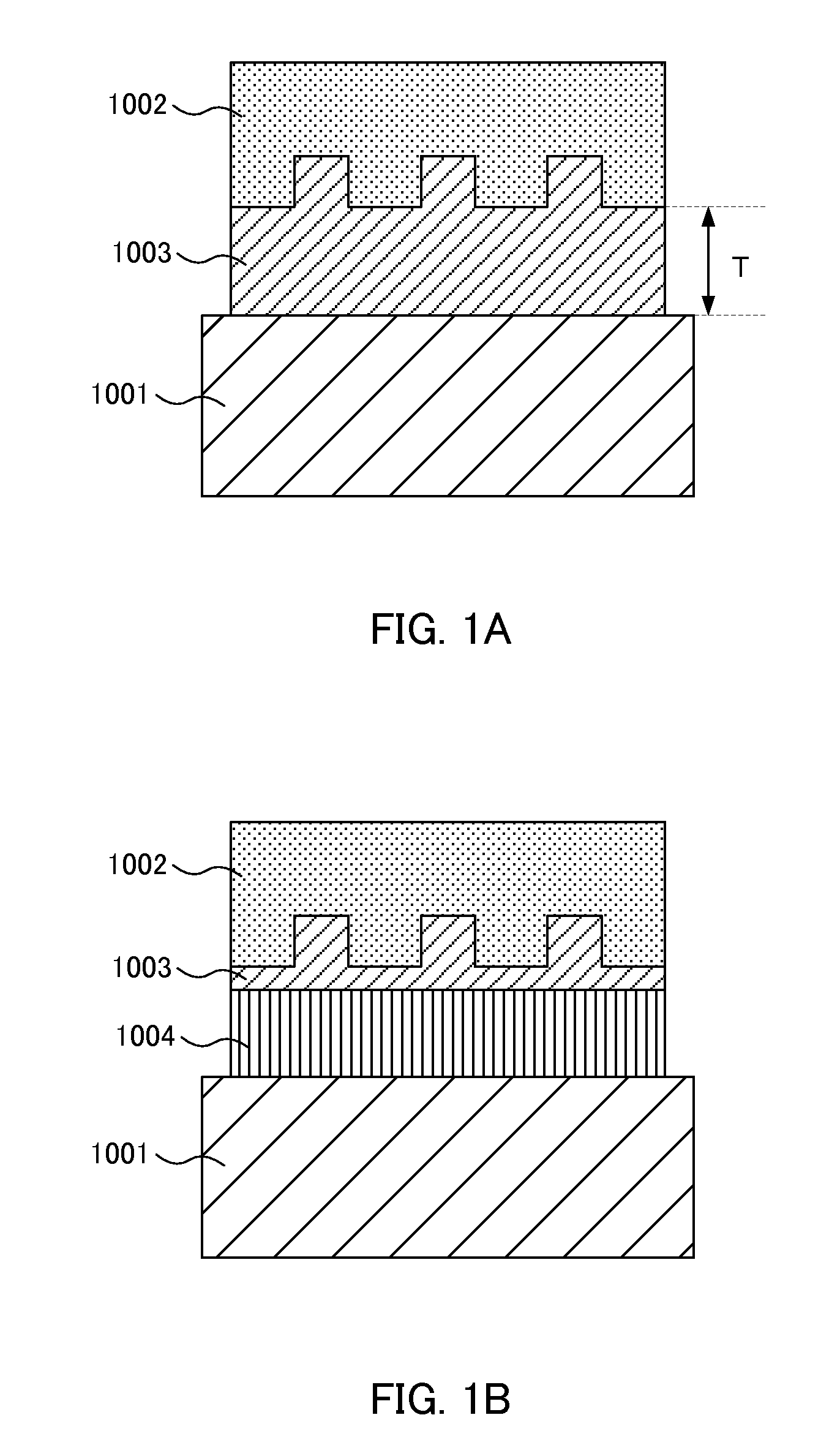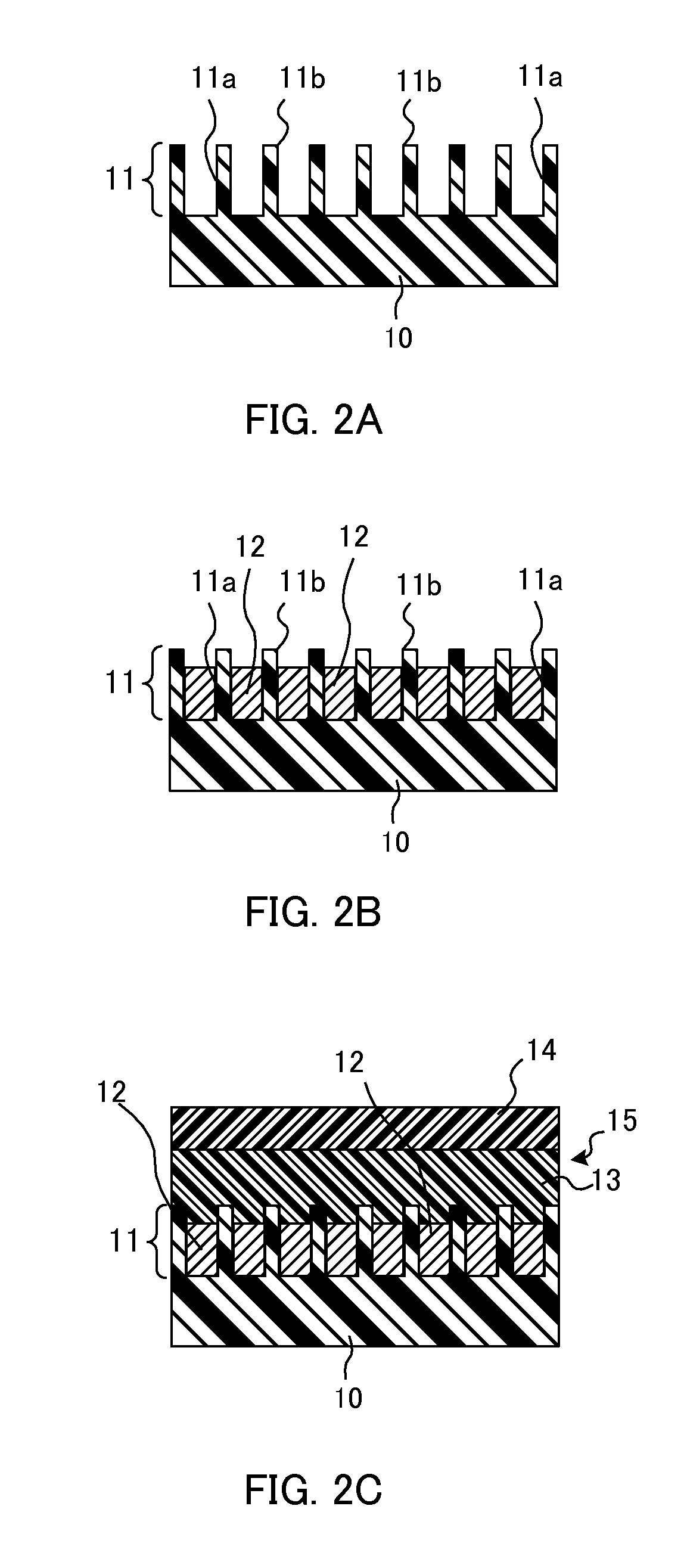Layered product for fine pattern formation and method of manufacturing layered product for fine pattern formation
a technology of fine pattern and layered product, which is applied in the field of layered products, can solve the problems of difficulty in fabricating fine pattern having a size smaller than the wavelength of light used in exposure, increase the cost of apparatuses in such methods, and unsatisfactory filling of transfer materials, etc., and achieves the effect of easy forming and high aspect ratio
- Summary
- Abstract
- Description
- Claims
- Application Information
AI Technical Summary
Benefits of technology
Problems solved by technology
Method used
Image
Examples
embodiment 1
[0130]FIG. 4A is a schematic cross-sectional view illustrating a layered product for fine pattern formation (hereinafter, referred to as a first layered product 1) according to Embodiment 1 of the first aspect of the present invention. As illustrated in FIG. 4A, the first layered product 1 includes a mold 101 having a concavo-convex structure 101a (hereinafter, referred to as a “fine pattern”) and a second mask layer 102 provided over the concavo-convex structure 101a of the mold 101 to form a fine pattern in the first mask layer 103.
[0131]The mold 101 is provided with a single (for example, a line shape) or a plurality of (for example, a dot shape) convex portions 101b extending in a certain direction, and a concave portions 101c are formed between the convex portions 101b. The convex portions 101b are provided to have a predetermined interval from each other along a direction perpendicular to the certain direction. That is, a plurality of convex portions 101b are formed across the...
embodiment 2
[0134]FIG. 4B is a schematic cross-sectional view illustrating a second layered product 2 of the layered product for fine pattern formation (hereinafter, referred to as a “second layered product 2”) according to Embodiment 2 of the first aspect of the present invention. As illustrated in FIG. 4B, the second layered product 2 includes a first mask layer 103 provided to cover the concavo-convex structure 101a of the mold 101 and the second mask layer 102 in addition to the configuration of the first layered product 1 according to Embodiment 1 described above. The first mask layer 103 comprises, for example, an organic material and serves as a laminating layer for laminating the object 200 to be processed to the concavo-convex structure 101a of the mold 101 and the second mask layer 102. That is, the second layered product 2 has a configuration in which the first mask layer 103 for providing the first layered product 1 on the object 200 to be processed is provided in advance on the con...
embodiment 3
[0669]FIG. 40 is a schematic cross-sectional view illustrating a layered product for fine pattern formation (hereinafter, referred to as a “third layered product 3”) according to Embodiment 3 of the second aspect of the present invention. As illustrated in FIG. 40, the third layered product 3 includes an object 200 to be processed, a first mask layer 301 that is provided on a principal surface of the object 200 to be processed and has a concavo-convex structure on a surface, and a second mask layer 302 provided on a convex portion 301b of the concavo-convex structure 301a of the first mask layer 301. The second mask layer 302 has a functionality of protecting at least the first mask layer 301 when the first mask layer 301 or the object 200 to be processed is fabricated.
[0670]Similar to the first mask layers 103 of the first and second layered products 1 and 2 according to the first aspect described above, the first mask layer 301 serves as a mask layer of the object 200 to be proces...
PUM
| Property | Measurement | Unit |
|---|---|---|
| distance | aaaaa | aaaaa |
| distance | aaaaa | aaaaa |
| water contact angle | aaaaa | aaaaa |
Abstract
Description
Claims
Application Information
 Login to View More
Login to View More - R&D
- Intellectual Property
- Life Sciences
- Materials
- Tech Scout
- Unparalleled Data Quality
- Higher Quality Content
- 60% Fewer Hallucinations
Browse by: Latest US Patents, China's latest patents, Technical Efficacy Thesaurus, Application Domain, Technology Topic, Popular Technical Reports.
© 2025 PatSnap. All rights reserved.Legal|Privacy policy|Modern Slavery Act Transparency Statement|Sitemap|About US| Contact US: help@patsnap.com



